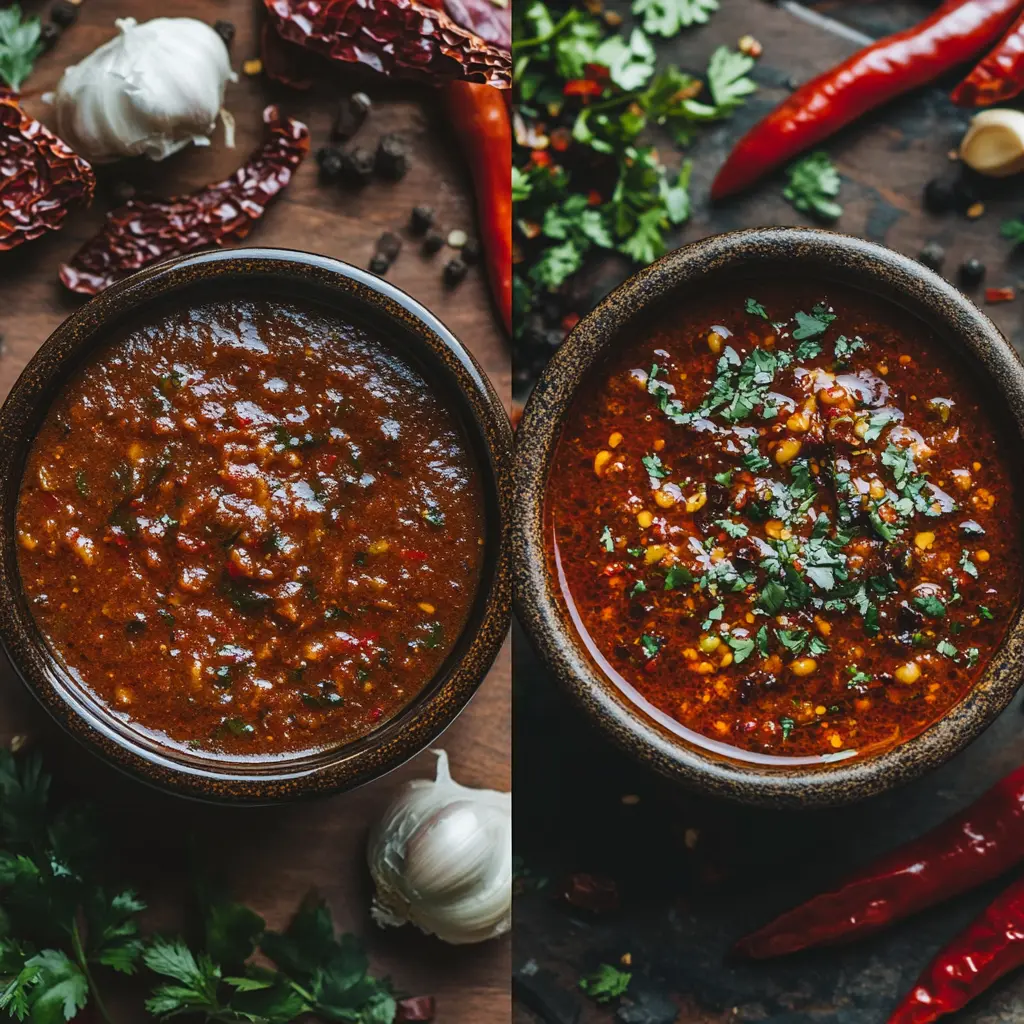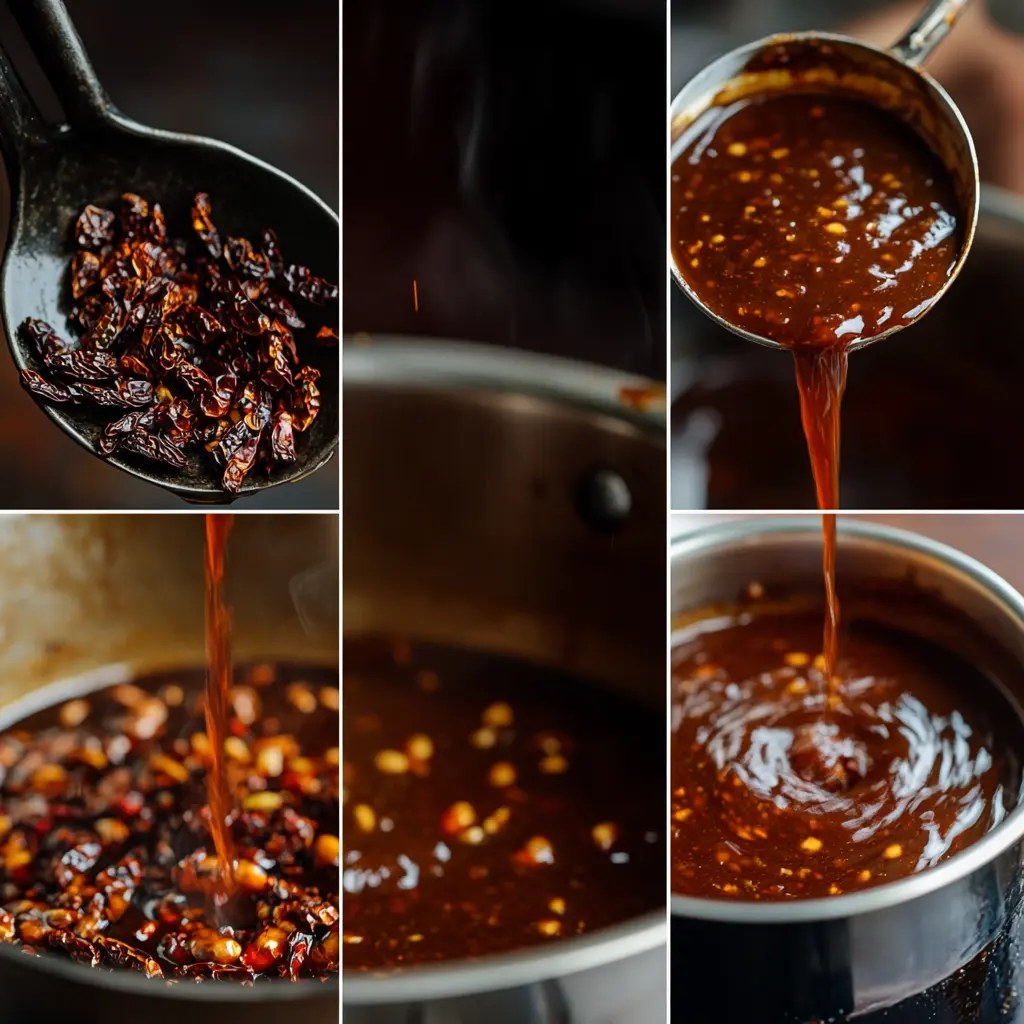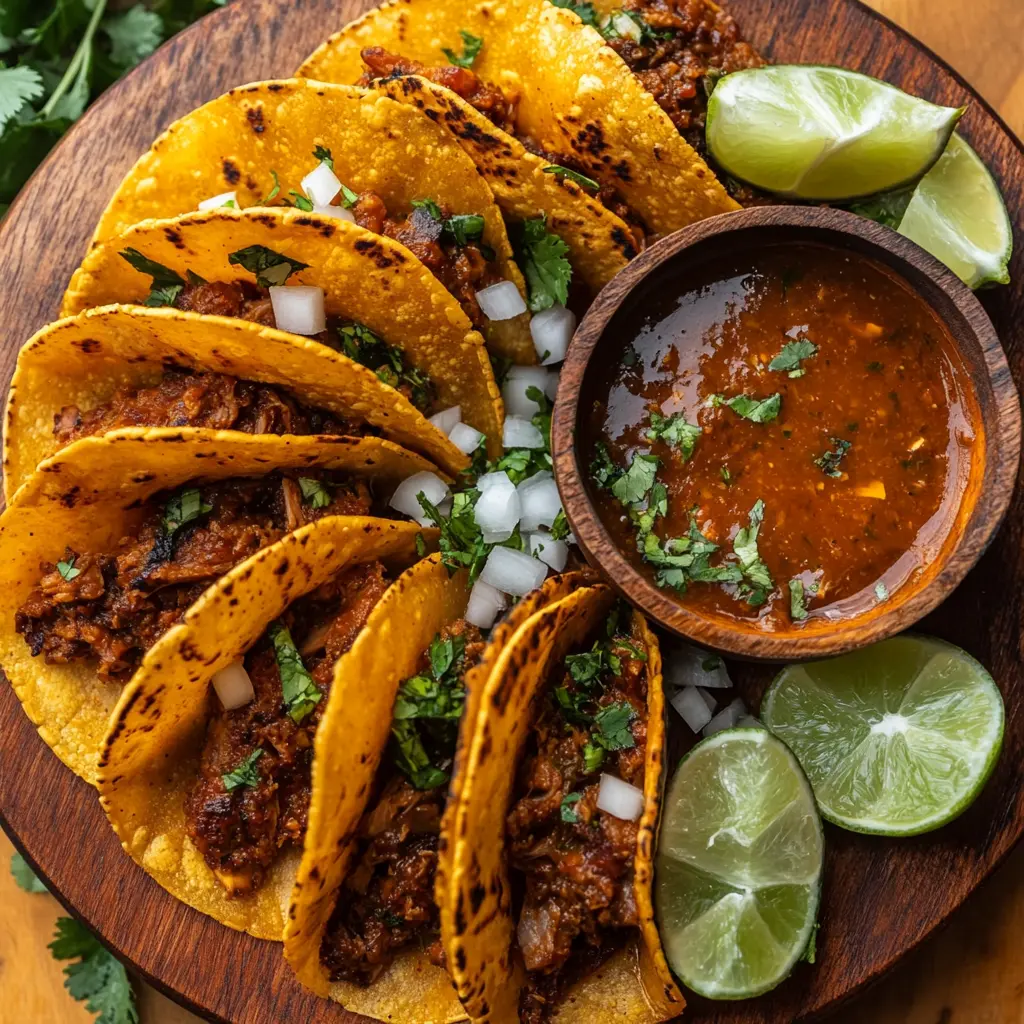Introduction
Birria tacos have skyrocketed in popularity thanks to their mouthwatering flavor, tender meat, and the irresistible sauce that ties everything together. But what is it about this birria sauce that makes it so iconic? In this article, we’ll delve deep into the ingredients, preparation methods, and cultural significance of the sauce that brings birria tacos to life. From traditional recipes to modern twists, we’ll explore every nuance of this celebrated dish.
Part 1: Introduction to Birria Tacos and Their Signature Sauce
Birria tacos are no ordinary tacos. Originating from the Mexican state of Jalisco, this dish has become a global sensation, and at its heart lies the rich, flavorful sauce. The sauce, often referred to as consomé, is the soul of birria tacos, providing depth, spice, and warmth. Whether you’re dipping the tacos or spooning it over the meat, the sauce makes the difference between good and unforgettable.
So, what exactly goes into this sauce? At its core, birria sauce combines a medley of dried chilies, fragrant spices, tomatoes, and other simple yet transformative ingredients. Generations have passed down careful preparation methods to achieve the complex flavor profile.
Historical Origins of Birria and Its Sauce
To truly appreciate birria tacos, understanding their origins is essential. Cooks traditionally prepared birria as a slow-cooked stew with goat meat, though many now substitute it with beef or lamb. The dish originated as a means of preserving meat using bold spices and smoky chilies. Over time, it evolved into tacos dipped in a savory, spiced broth, elevating the humble meal into a culinary masterpiece.
The sauce itself stems from the same principles of preservation. Dried chilies, such as guajillo and ancho, were essential due to their long shelf life and intense flavors. Cooks combined indigenous Mexican herbs like oregano and cumin to design a sauce that enhances the meat’s richness and adds a kick of heat.
Traditional Ingredients in Birria Sauce
At the heart of birria sauce is a carefully curated selection of ingredients that balance heat, acidity, and umami. Each ingredient serves a unique purpose in building the layers of flavor.
Dried Chilies: The Heart of the Flavor
The backbone of birria sauce is a combination of dried chilies, particularly guajillo, ancho, and pasilla peppers. Toast the chilies to release their oils, and then soak them to soften their texture. Guajillo chilies add a mild smokiness, ancho chilies contribute sweetness and depth, and pasilla chilies bring a hint of bitterness.
Aromatics: Garlic and Onions
Every great sauce starts with aromatics. Garlic and onions are sautéed or roasted to infuse the sauce with a savory, fragrant base. These simple ingredients create the foundation that supports the complex spice blend.
Herbs and Spices: Cumin, Oregano, and More
Birria sauce wouldn’t be complete without a medley of earthy spices. Cumin lends a nutty, warm flavor, while oregano introduces a floral, slightly peppery note. Cooks often add cloves, cinnamon, and bay leaves in small quantities to amplify the sauce’s depth.
Acidic Components: Vinegar and Tomatoes
Acidity is key to balancing the bold flavors of birria sauce. Vinegar, often white or apple cider, cuts through the richness of the meat, while tomatoes add a subtle sweetness and tang. The combination of these acidic components ensures the sauce doesn’t overwhelm the palate.
Regional Variations in Birria Sauce Recipes
The classic recipe is rooted in Jalisco, but variations in birria sauce showcase the diversity of Mexican cuisine. Each region puts its own spin on the beloved dish, incorporating local ingredients and flavors.

Jalisco Style
The Jalisco-style birria sauce is the archetype. It uses a combination of dried chilies, tomatoes, and aromatic spices to create a savory, slightly smoky sauce. Traditionally, cooks serve the consomé alongside the tacos, allowing diners to dip and savor every bite.
Zacatecas Style
In Zacatecas, birria sauce takes on a spicier profile. The chili-to-tomato ratio is higher, resulting in a more robust heat. Additionally, cooks commonly add herbs like Mexican marjoram, which give the sauce a distinct herbal quality.
Part 2: Preparation Methods for Authentic Birria Sauce
Creating an authentic birria sauce is a labor of love, requiring precision, patience, and attention to detail. Each step, from toasting the chilies to blending the ingredients, contributes to the sauce’s signature richness and depth. Let’s break down the traditional preparation methods that make this sauce unforgettable.

Toasting and Soaking Chilies
The first step in preparing birria sauce is to toast the dried chilies. This process enhances their flavor by releasing the natural oils, giving the sauce its smoky undertones. To avoid bitterness, cooks lightly toast the chilies just until they release a fragrant aroma.
After toasting, cooks soak the chilies in warm water to rehydrate them. This step softens their texture, making them easier to blend into a smooth paste. Cooks often reserve the soaking water and add it back into the sauce to enhance its flavor.
Blending Ingredients to Perfection
Once cooks rehydrate the chilies, they blend them with other ingredients to create the base of the sauce. They add garlic, onions, tomatoes, and spices, along with a splash of the reserved chili water or broth. Achieving the perfect consistency is key—it should be smooth, but not too watery.
The blending process often includes slow incorporation of oil or lard, which emulsifies the mixture and enhances the sauce’s richness. Cooks traditionally used a stone mortar (molcajete), but modern kitchens now rely on blenders or food processors for convenience.
The Role of Consomé in Birria Tacos
Consomé, the broth that accompanies birria tacos, is more than just a dipping sauce. It’s the flavorful backbone of the dish, created by simmering the sauce with the cooking juices of the meat. Cooks serve this rich, spiced liquid on the side, allowing diners to dip their tacos for an explosion of flavor.
The consomé captures the essence of the dish, with layers of smoky chilies, savory meat drippings, and fragrant spices. Some chefs drizzle the consomé over the tacos before serving, ensuring every bite is infused with the sauce’s signature flavor.
Modern Twists on Traditional Birria Sauce
In recent years, birria tacos and their accompanying sauce have undergone a renaissance. Chefs around the world are putting their own spin on the dish, blending tradition with innovation.
Fusion Dishes: Birria Ramen and Pizza
Birria sauce has found its way into a variety of fusion dishes, such as birria ramen and birria pizza. In these creative takes, chefs adapt the sauce to complement noodles or cheese, showcasing its versatility. While these dishes deviate from tradition, they highlight the sauce’s universal appeal.
Vegetarian and Vegan Adaptations
For those who avoid meat, chefs adapt birria sauce to suit vegetarian and vegan diets. They use ingredients like jackfruit or mushrooms to replicate the meaty texture, while vegetable broth replaces the traditional meat-based consomé. The spice blend and preparation methods remain largely the same, ensuring the sauce retains its bold flavor.
Part 3: Nutritional Information and Health Considerations
Birria sauce is undeniably delicious, but it’s also worth exploring its nutritional profile. While packed with bold flavors and wholesome ingredients, the sauce’s calorie count and nutrient content can vary depending on the preparation method and portion size.
Calories and Macronutrients
Dried chilies, tomatoes, and spices, which are naturally low in calories, form the primary ingredients of birria sauce. However, the addition of oil or lard during the cooking process can increase the calorie count. On average, a single serving of birria sauce contains:
- Calories: 50–70 (per 1/4 cup)
- Protein: 1–2 grams
- Fat: 3–5 grams (depending on the type and quantity of oil used)
- Carbohydrates: 5–7 grams
Vitamins and Minerals
Thanks to its ingredients, birria sauce provides a range of vitamins and minerals, including:
- Vitamin C from tomatoes and chilies, which supports immune health.
- Iron from chilies and spices, which aids in oxygen transport.
- Antioxidants like capsaicin from chilies, known for their anti-inflammatory properties.
Healthier Preparation Tips
To make birria sauce lighter and more nutritious, consider these tips:
- Use less oil or substitute with healthier fats like avocado oil.
- Opt for homemade vegetable broth to reduce sodium content.
- Avoid adding sugar or overly processed ingredients to maintain the sauce’s natural flavor.
Serving Suggestions and Pairings
The beauty of birria sauce lies in its versatility. It pairs seamlessly with a variety of sides, toppings, and beverages, enhancing the dining experience.
Classic Pairings
- Corn Tortillas: The most traditional pairing, perfect for soaking up every drop of the sauce.
- Pickled Vegetables: Tangy and crunchy, these complement the richness of the sauce.
- Fresh Herbs: Chopped cilantro and diced onions add brightness and texture.
Creative Combinations
- Over Rice: Pour the sauce over rice for a hearty and flavorful meal.
- As a Soup Base: Use the sauce to create a spiced broth for soups or stews.
- With Quesadillas: Drizzle the sauce over cheesy quesadillas for a decadent treat.
Common Misconceptions About Birria Sauce
Despite its growing popularity, there are several myths and misconceptions about birria sauce that deserve clarification.
It’s Always Spicy
Many assume birria sauce is intensely spicy, but cooks can easily adjust its heat level. By reducing the quantity of chilies or using milder varieties like guajillo, you can create a sauce that’s flavorful but not overly hot.
It’s Difficult to Make
Preparing birria sauce may seem daunting, but with a bit of planning, it’s surprisingly straightforward. Many recipes are adaptable for home kitchens, requiring only a blender and a handful of ingredients.
It’s Only for Tacos
While birria tacos are the most popular dish featuring this sauce, its uses go far beyond tacos. From enchiladas to casseroles, the sauce is versatile enough to enhance countless dishes.
Frequently Asked Questions
What types of meat are traditionally used in birria tacos?
Cooks traditionally made birria with goat meat, as it was a staple in the Jalisco region. However, beef has become a popular alternative due to its wider availability and milder flavor. Lamb and mutton are also common options, offering a unique depth of flavor.
How spicy is birria sauce typically?
The spice level of birria sauce varies depending on the type and quantity of chilies used. While some versions are quite spicy, the heat can be adjusted to suit individual preferences. Milder chilies like guajillo add flavor without overwhelming heat, while spicier varieties like chile de árbol turn up the intensity.
Can birria sauce be made ahead of time and stored?
Yes, birria sauce can be made ahead and stored for convenience. It keeps well in the refrigerator for up to a week in an airtight container. For longer storage, it can be frozen for up to three months. Reheat gently on the stove to preserve its rich flavors.
What are common side dishes served with birria tacos?
Popular side dishes include Mexican rice, refried beans, and pickled vegetables. Some enjoy a side of sliced avocado or a fresh green salad to balance the meal. Tortilla chips with salsa or guacamole are also great accompaniments.
Is it possible to make birria sauce without dried chilies?
While dried chilies are a defining ingredient, you can create a substitute sauce using fresh chilies or chili powder. However, this variation may lack the smoky depth and complexity of the traditional version. Roasted red bell peppers can also be used for a milder, sweeter alternative.
How does birria differ from barbacoa?
While both birria and barbacoa are slow-cooked meat dishes, the key difference lies in the preparation and flavor profile. Barbacoa is typically cooked underground or in a pit, seasoned with a simpler spice mix. Birria, on the other hand, is braised with a spiced sauce made from chilies, tomatoes, and herbs, giving it a more robust and complex flavor.
Conclusion: The Cultural Significance of Birria Sauce
Birria tacos, with their vibrant, spiced sauce, are a celebration of Mexican culinary traditions. The sauce’s intricate blend of ingredients and careful preparation methods reflect the creativity and resilience of the communities that brought this dish to life. From its humble origins in Jalisco to its global fame, birria sauce remains a testament to the power of food to unite and delight.
Whether enjoyed in its traditional form or with a modern twist, birria sauce continues to captivate taste buds and tell a story of flavor, heritage, and innovation. As you explore its rich history and bold flavors, you’ll come to appreciate why it’s more than just a condiment—it’s an experience.

